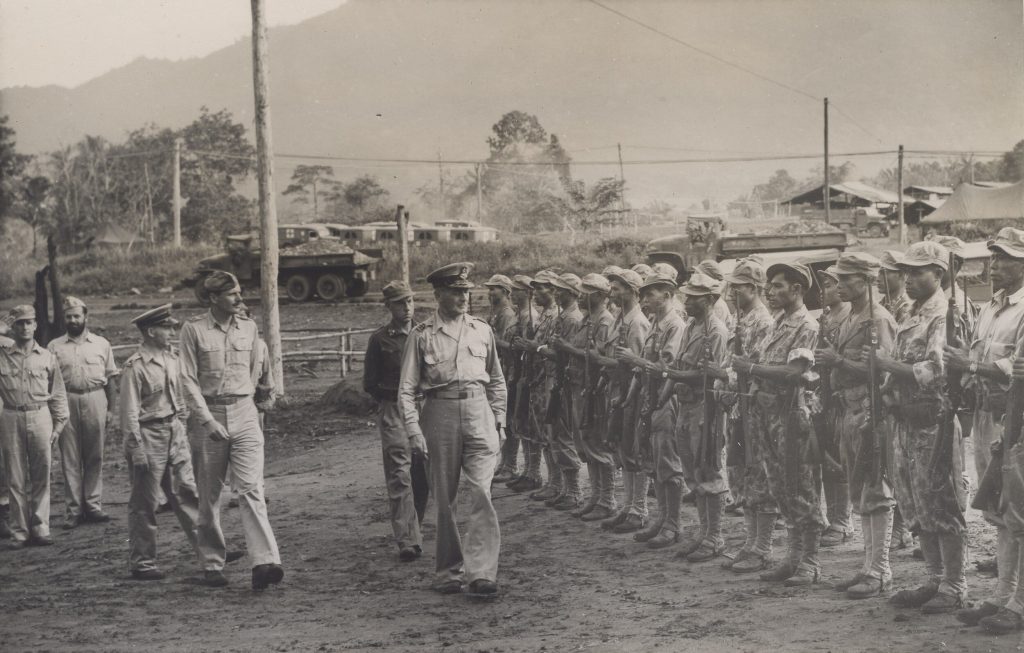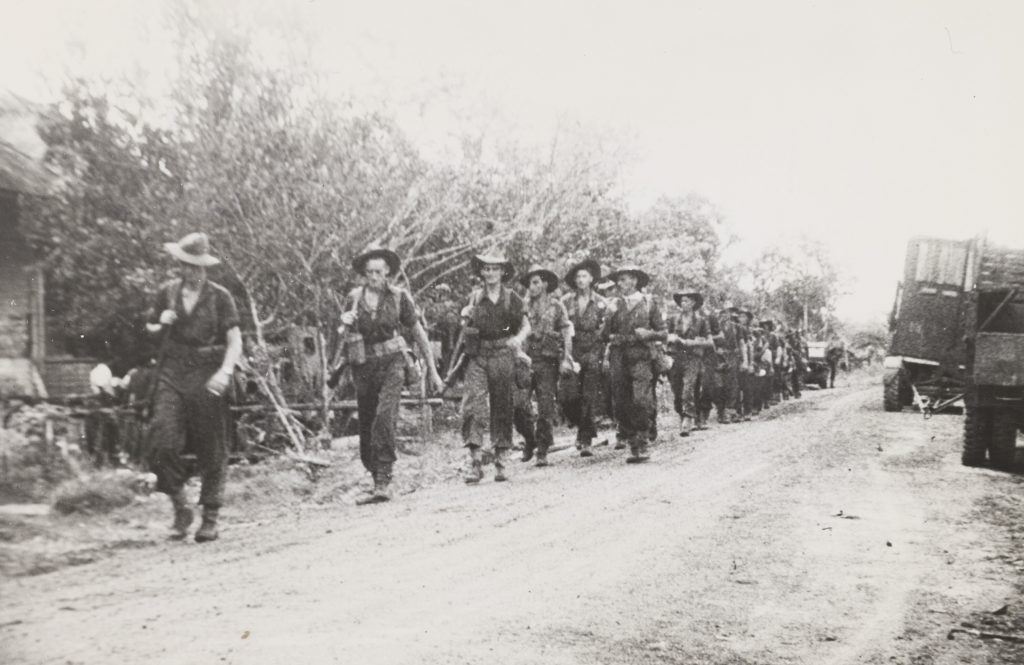Dutch New Guinea
The Moluccan policeman (only known as M.E.) operated in New Guinea from 1935 to April-May 1942, first in Fakfak and then in Babo. On the day of the capitulation of the KNIL he was in the area south of Babo, in the Mimika region in Oeta. The Japanese would not land there. There was a rumor at the time that that was going to happen. Based on this rumor, M.E. fled. towards Fakfak, but he later refuted this.
The KNIL soldiers in New Guinea were ordered to withdraw into the interior and continue the fight. This assignment was different from all other units from the moment of the capitulation. Also M.E. felt it was his duty to continue: he speaks of a service order, .dapet printah.. In April-May he left for Wisselmeren, located more to the east and inland, to look for the post of the Domestic Administration where controller Dr. J.V. de Bruijn would be. This group consisted of 53 people.
After making contact, De Bruijn sent M.E. together with other police officers, to Merauke to continue the fight there. That meant a journey to the eastern border of Dutch New Guinea and the entire East Indies; a distance of 700 km through mountains and jungle.

Training in Casino
ME. and fifteen other police officers would formally become soldiers and undergo training in Australia. This group would become part of the so-called Papua battalion that was formed in Hollandia from the end of 1944. In mid-1942 the group was taken by ship to Melbourne. The ship was a Dutch oil tanker that managed to escape from Babo in March 1942.
The training as an infantryman took 8 months and took place in Camp Casino. ME. was later assigned to the 2nd company of the 1st KNIL battalion. This unit was attached to the Australian 9th Division which later arrived on the island of Morotai and from there landed in Tarakan on the east coast of Borneo on 1 and 2 May 1945.
The story of M.E. is not so much an act of resistance in the literal and immediately visible sense such as laying mines, derailing trains and the like, but the continuation of the struggle after the surrender. Yet the story of M.E. a typical one that, together with all literal resistance activities, is referred to as the Indian resistance. Finally, after contacting Dr. De Bruijn, it could have turned out that M.E. had remained with that group in order to provide the Allies with a contact in a strategically important part of the occupied Indies.
The pictures below are of the Australian 9th Division from the archives of the Netherlands Royal Army. The caption for both pictures is: Soldiers from the 9th Division of the Australian Imperial Forces, who have previously been deployed to the Middle East and New Guinea, pass military vehicles and move inland from the landing beaches at Lingkas on Tarakan Island.


Source: Het verzet in Nederlands-Indië tegen de Japanse bezetter.
See also: Dutch Camp Casino WWII


